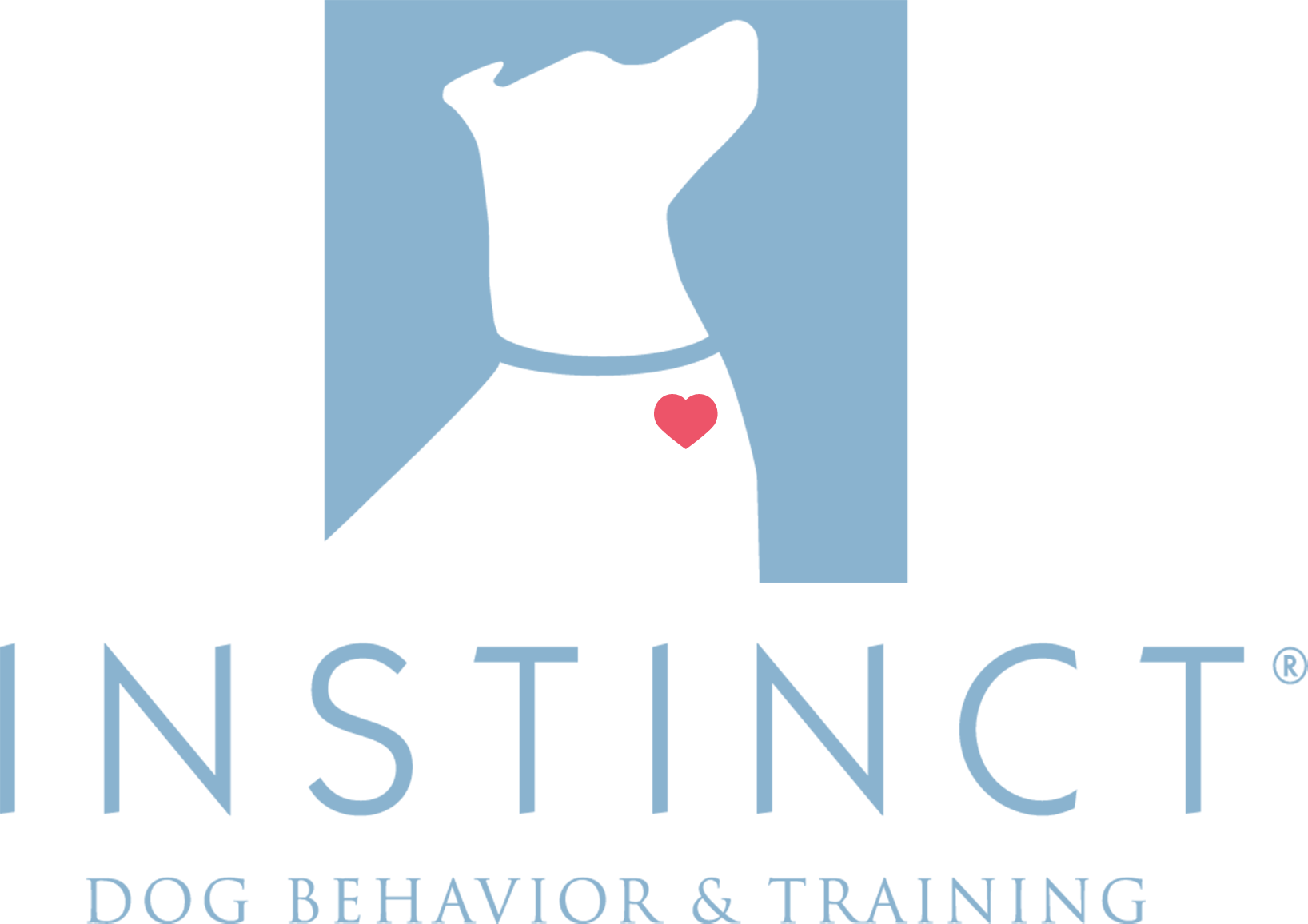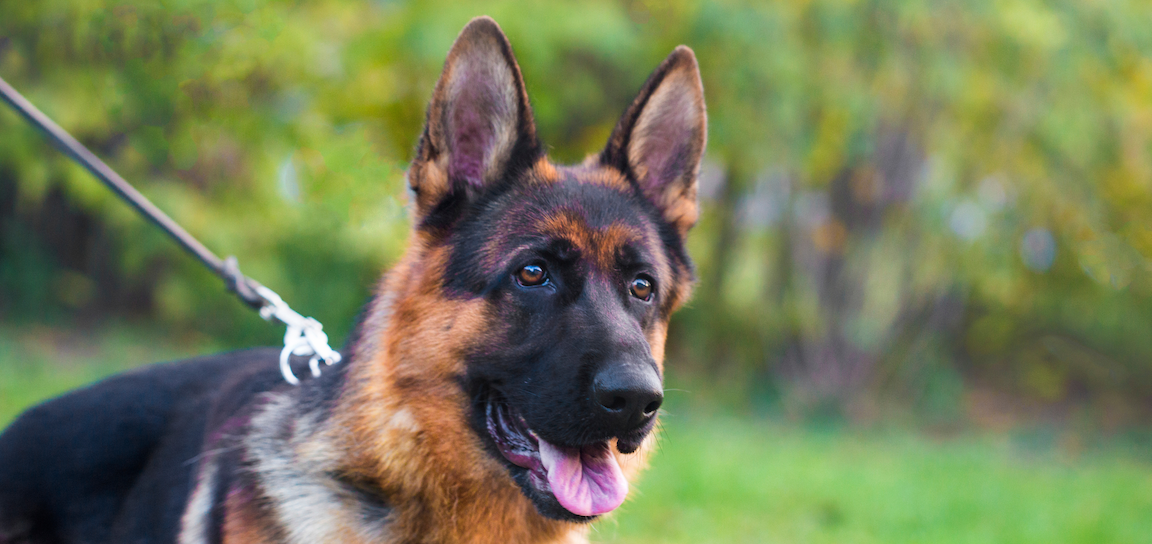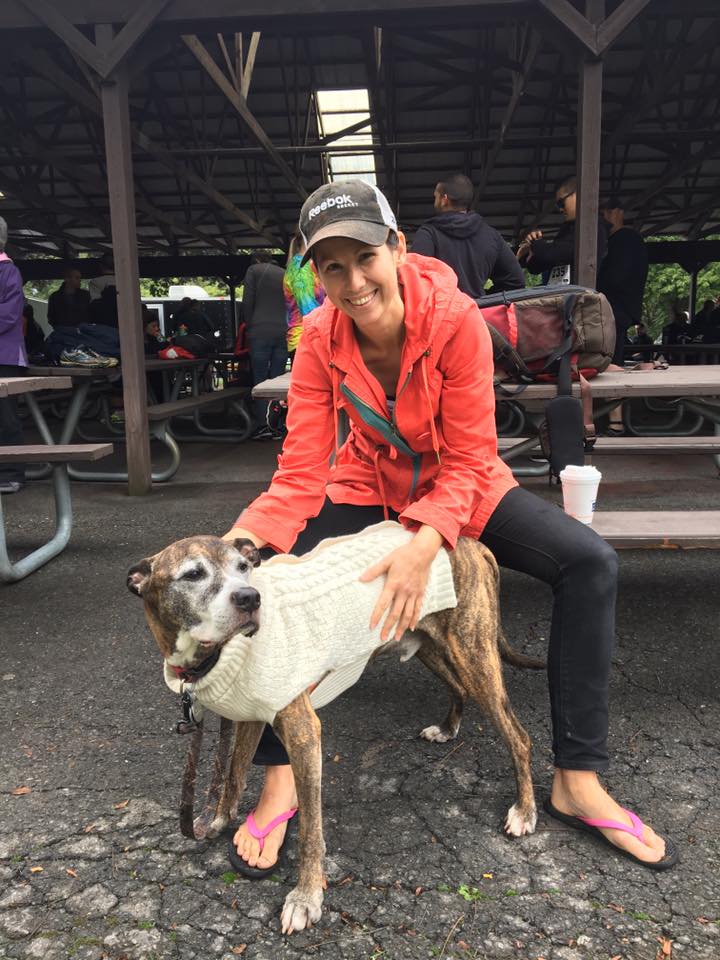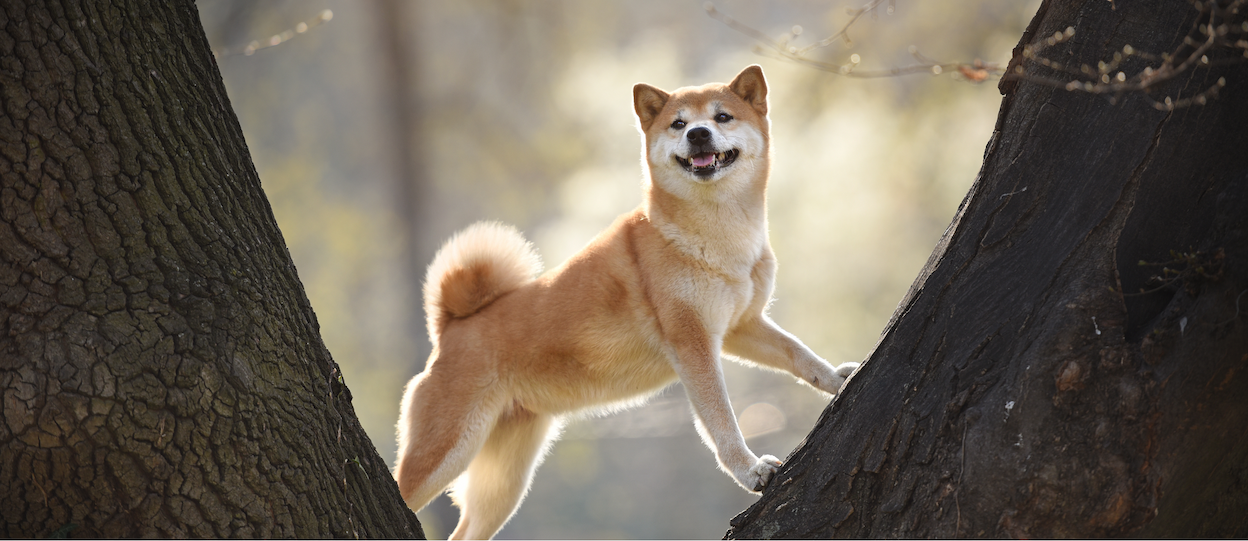
Welcome to the blog!
This week, we’re sharing the top 5 behavior concerns we see arise when folks bring their dogs along on family holidays, as well as our favorite strategies for keeping the trip safe, fun, and conflict free for everyone.
Happy Reading,

Holiday Travel with Your Dog: Top 5 Behavior Challenges to Watch For
Taking your dog along with you on holiday can be a lot of fun, but it can also present some significant behavior challenges. Why?
- Car rides and plane trips are tiring and stressful for dogs and people—even if we feel lots of positive anticipation about heading out on an adventure.
- Being in a new place with new routines can be a lot of fun, but by default it means being away from the familiar belongings and routines that normally serve to provide our dogs with feelings of comfort, predictability, and safety.
- Interacting with new people and dogs, often in confined spaces and/or around interesting resources, presents lots of opportunities for conflicts and misunderstandings
This travel-related stress can affect even highly social dogs. Think about how you feel at the end of a multi-day trip to visit family or friends: even if you’ve had an AMAZING time, you likely feel tired, your patience has worn a bit thin, and you are very, very ready to get back to your own space and belongings.

5 Common Behavior Challenges that Arise on Holiday Trips
If you’re taking your dog with you on a trip this holiday season, be aware of these common behavior challenges that can arise—and learn the steps you can take to prevent or manage these concerns.

It’s very common for dogs to display some level of separation-related distress when you try to leave them alone in a brand new place—even if they’re normally very comfortable being left alone at your own home.
It’s understandable for our dogs to feel worried about their human leaving without them in this novel situation. After all, they’re in an unfamiliar spot with unfamiliar routines, and without the comforting track record of you leaving and returning again in this particular location.
Reduce Separation-Related Distress in a Novel Environment:
- Avoid Leaving Them Alone Right Away. Try to plan your trip so you don’t need to leave your dog alone within the first few hours (ideally within the first day) of your arrival.
- Spend Time with Them in Their ‘Alone Zone’. Wherever you plan to leave your dog, spend some down time with them in that room before you actually leave them alone. Take a little nap, scroll on your phone, etc. Just relax together in that space for 30-60 minutes, then come out together and resume your normal activities. It’s ideal if you’re able to repeat this 2-3 times before you actually leave your dog in there alone.
- Follow Your Regular Departure Routine. If you have a general routine, formal or informal, that you follow at home when you leave your dog alone, make an effort to implement it while you’re away, too. If there’s a phrase you normally say when leaving, use it! If you typically give a certain type of stuffed Kong or long-lasting chew, provide it. And if you normally leave on talk radio or soft music, arrange to have it playing for them when you go.

Whatever baseline level of comfort your dog has with people or other dogs, it’s a good idea to assume that level of comfort and tolerance may decrease to some degree while you are away on holiday. Remember, your dog’s stress levels are often going to be somewhat elevated with all the changes and excitement; this can result in decreased tolerance and comfort during social interactions…especially with unfamiliar people and dogs.
So, even if your dog is normally pretty tolerant of someone approaching to pet them while they rest on the couch, don’t be surprised if you see them getting stiff and giving whale eye when your uncle approaches and reaches out his hand to say hello on day 2 of your trip.
Prevent or Reduce Fearful, Aggressive & Reactive Behavior:
- Be Aware of ‘Hot Spots’. These are situations in which fearful, aggressive, and reactive behaviors are more likely to arise. They include interactions:
- When food is present (human food or dog food)
- When bones, high value chews, or new toys are present
- When your dog is resting/sleeping
- When your dog is in a narrow/confined space, or anywhere they may feel cornered
- When human and/or dog excitement levels are high, like when Aunt Susan is yelling at the football game, or when you and your brother are getting into a fiery policy debate over dinner
- When someone is trying to interact with your dog in a very up-close-and-personal way: giving them a kiss on the nose, grabbing their face for a cuddle, hugging, prolonged or rough petting, etc.
- Give Clear Instructions. Provide instructions to friends & family members beforehand so they know the do’s & don’ts of interacting with your dog. Set firm boundaries about “up-close & personal” contact and “hot spot” etiquette. If getting people on board with your instructions feels like an overwhelming task, you might opt to put your dog away during certain activities or when certain family members are present.
- Advocate for Your Dog Before They Feel the Need to Escalate. If you see your dog in an uncomfortable situation, step in right away and get them the space they need, even if they seem to be tolerating the interaction. This can be done kindly and without conflict, but it needs to be done. It is very important not to assume that your dog will continue to tolerate certain types of unpleasant interactions over the course of the entire visit; it’s very common for a dog to tolerate a rude or overzealous greeting the 1st, 2nd, or 3rd time it happens. But as stress levels rise over the course of the visit, some dogs will eventually escalate to more overt displays (growling, snapping, biting) to try to make the unpleasant interactions stop. Many of our clients who report bites that occur while on holiday share with us that the bite incident happened on the last day of their visit.

A lot of folks see an uptick in their dog’s alert barking when they’re in a new place—especially after the first 24 hours (though for some dogs, the opposite happens and they bark less frequently than they do at home). The increased barking is most common when a dog is a little more stressed or on-edge than normal, and are extra-attuned to all the unfamiliar sights and sounds that may signal a potential intruder.
Prevent or Reduce Alert Barking in a Novel Environment:
- Practice “Go to Bed”. If your dog knows a “Go to Bed” cue, have them practice it soon after you arrive, and several times throughout the day. This accomplishes two things:
- First, it gives you a simple and effective redirection behavior to use if your dog starts persistently alert barking at something
- Second, it helps your dog spend time in the new space without being in a state of hyper-vigilance about every little sight and sound; you’re communicating to them that this is a place to chill out and relax
- Use a Treat Jar & House Leash. Depending on your dog’s level of responsiveness (see Common Behavior Issue #5 below), it can be super helpful to keep a lightweight leash on your dog inside, so you can gently and easily lead them away from the door or window if they erupt into a barking fit at noises outside. Set up a treat jar next to their bed so you can easily reward desired behavior.
- Block Access to Front-Facing Windows. If possible, keep the blinds closed on front-facing windows/doors. While it can seem like a nice activity for your dog to sit and look out the window, more often than not it just results in them erupting into a barking fit at every person, dog, cat, squirrel, or car that goes by. Remaining in a constant state of vigilance at the window makes overzealous alert barking far more likely.
- Use Background Noise. If the house where you’re staying is pretty quiet, try turning on the radio, television, or some white noise, so your dog isn’t picking up on every little unfamiliar sound.

This one is SUPER common. For most dogs, potty training starts out as a very context-specific behavior: they first learn, “I don’t pee or poop in MY HOUSE”. Many dogs, especially juveniles and adolescents, need practice in different environments to generalize the lesson to be, “I don’t pee or poop HOUSES/BUILDINGS.”
The likelihood of house training accidents is often exacerbated if your dog is stressed, or if there’s another dog in the home where you’re visiting who perhaps marks or has occasional accidents as well.
Prevent Accidents in a Novel Environment
If your dog already has a proven track record of exhibiting solid potty training skills in a variety of locations, no action is required other than sticking to your normal relief routine.
But, if visiting somewhere new is uncharted territory for your dog (or if they’ve had trouble on past visits), try the following:
- Increase Supervision. Expect to increase your level of supervision and watch for signs that your dog is about to eliminate inside so you can take them out quickly.
- Add More Potty Breaks. Plan to provide more potty breaks than normal, at least for the first few days of the visit.
- Use a House Leash. If the house is large and/or if your dog is still learning to be responsive when you call them, have them wear a lightweight house leash inside, so it’s easier to keep them in your sights and quickly guide them outside to potty when needed.

Don’t be surprised if your dog has a harder time than normal responding to your cues. For example, they may be quick to break a ‘Stay’ when asked to hang out on their bed for the first time, or they may completely blow off your recall cue when exploring your mom’s back yard. Going to a new place is exciting, distracting, and sometimes a little overwhelming.
Help Your Dog Respond to Cues in a Novel Environment
- Provide Time for Information Gathering. Give your dog a chance to get acclimated to their new environment. Depending on their age and level of mischievousness, it’s often helpful to keep them on a leash while you take them on a sniffy tour of the house and outdoor area where you’ll be staying
- Give Them ‘Easy Wins’. After your dog has had a chance to check out their surroundings, practice some super easy repetitions of their favorite skills in a quiet spot, using really good rewards.
- Train Throughout the Day. Work in a little training throughout the day, increasing the level of difficulty and distraction gradually and continuing to offer high value rewards for desired responses.
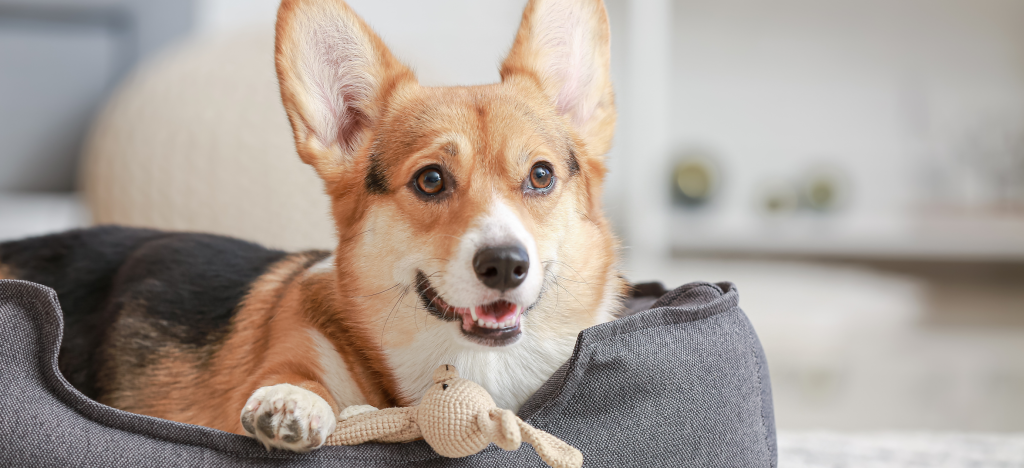
Manage Overall Stress Levels While You’re Away
In addition to the issue-specific tips provided above, here are three simple steps you can take to help your dog feel relaxed and comfortable throughout your visit:
- Bring Familiar Belongings. If possible, bring your dog’s own bed, favorite blanket, and a selection of preferred toys along with you.
- Schedule Down Time. Give your dog lots of breaks from the holiday hubbub – and hang out with them for some of it…it’ll be restorative for you, too!
- Be Mindful of Activity Levels. If your dog is doing a LOT more high intensity exercise than normal, be mindful that they may experience some muscle soreness than can contribute to raised stress levels.
- Talk To Your Vet About Meds. If you expect that your dog will have a difficult time with the change in environment and routine, talk to your veterinarian about whether they feel situational behavior medications might be appropriate to help them navigate the visit (or certain aspects of the visit, like being left alone) with less stress.
Happy Thanksgiving to You & Your Dog!
NEED TRAINING OR BEHAVIOR SUPPORT?
Check out the resources below!
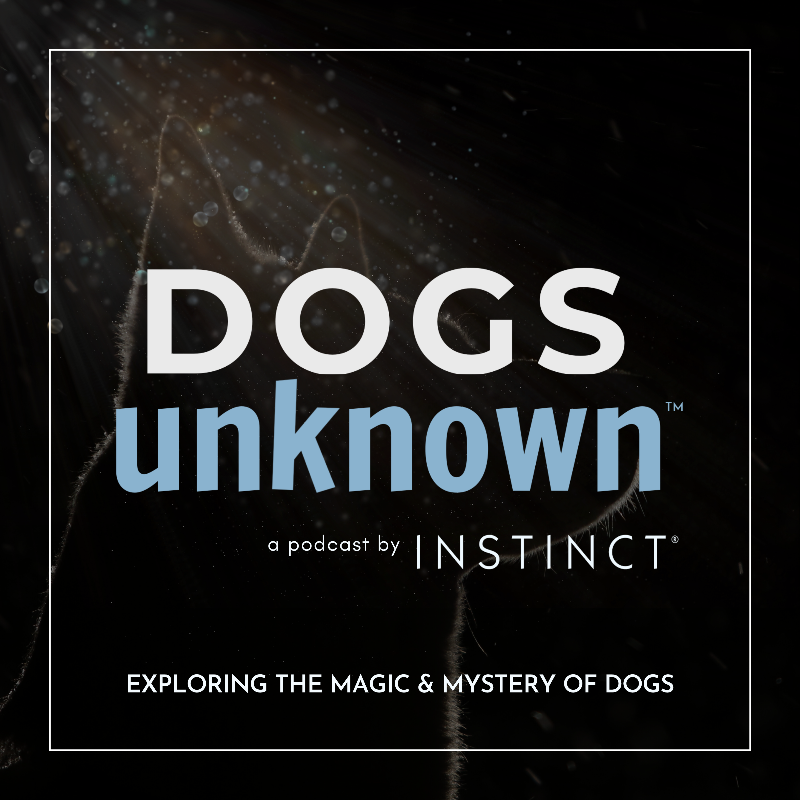
Check out Instinct’s award-winning podcast, Dogs Unknown (fka DogLab), hosted by Instinct Co-Founders Sarah Fraser (me!) and Brian Burton.
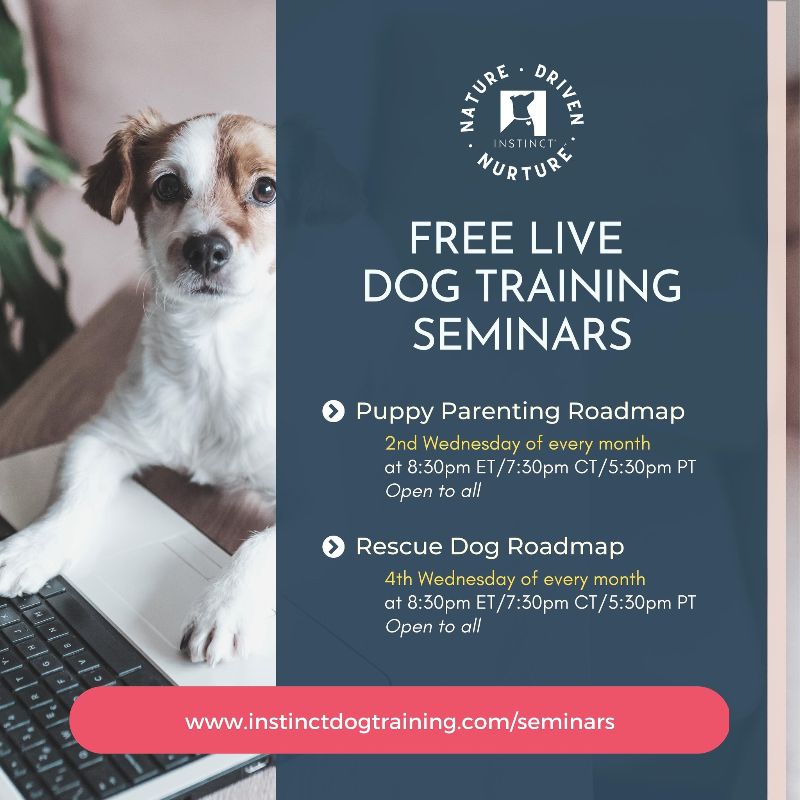
Join one of our free, live training & behavior seminars via Zoom!
Hosted by Instinct behavior consultants, these seminars include a 1 hr presentation plus live Q&A session. Open to all!
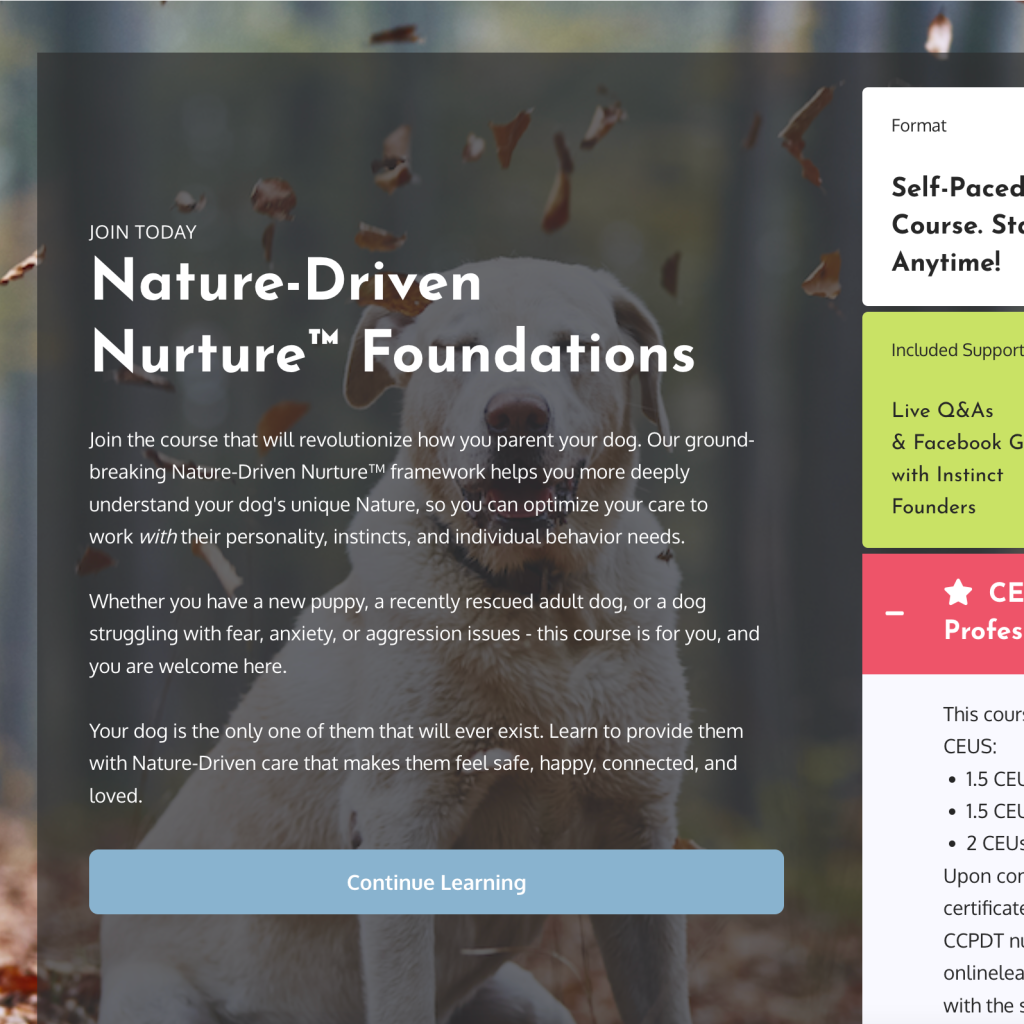
Sign up for the Nature-Driven Nurture Foundations course in our Online School. Learn our groundbreaking canine behavioral health framework that teaches you how to optimize your dog’s training & care based on their unique, individual Nature. This self-paced course includes:
- Access to private Alumni Facebook group
- Twice-monthly Zoom Q&As with Instinct co-founders
Or, contact your local Instinct for fully customized training & behavior support with certified, veterinarian-recommended trainers and behavior consultants.
